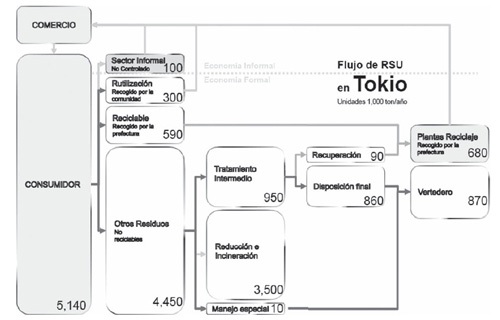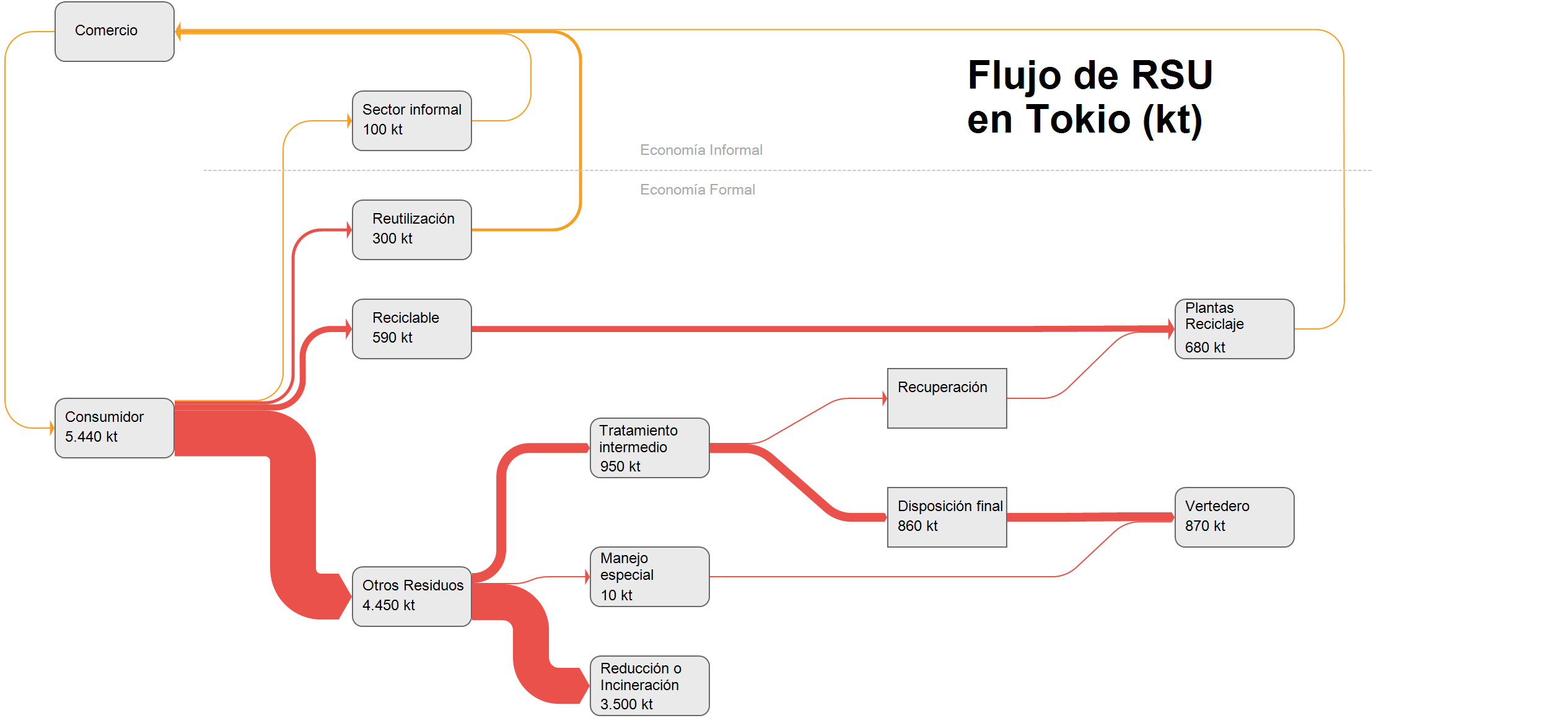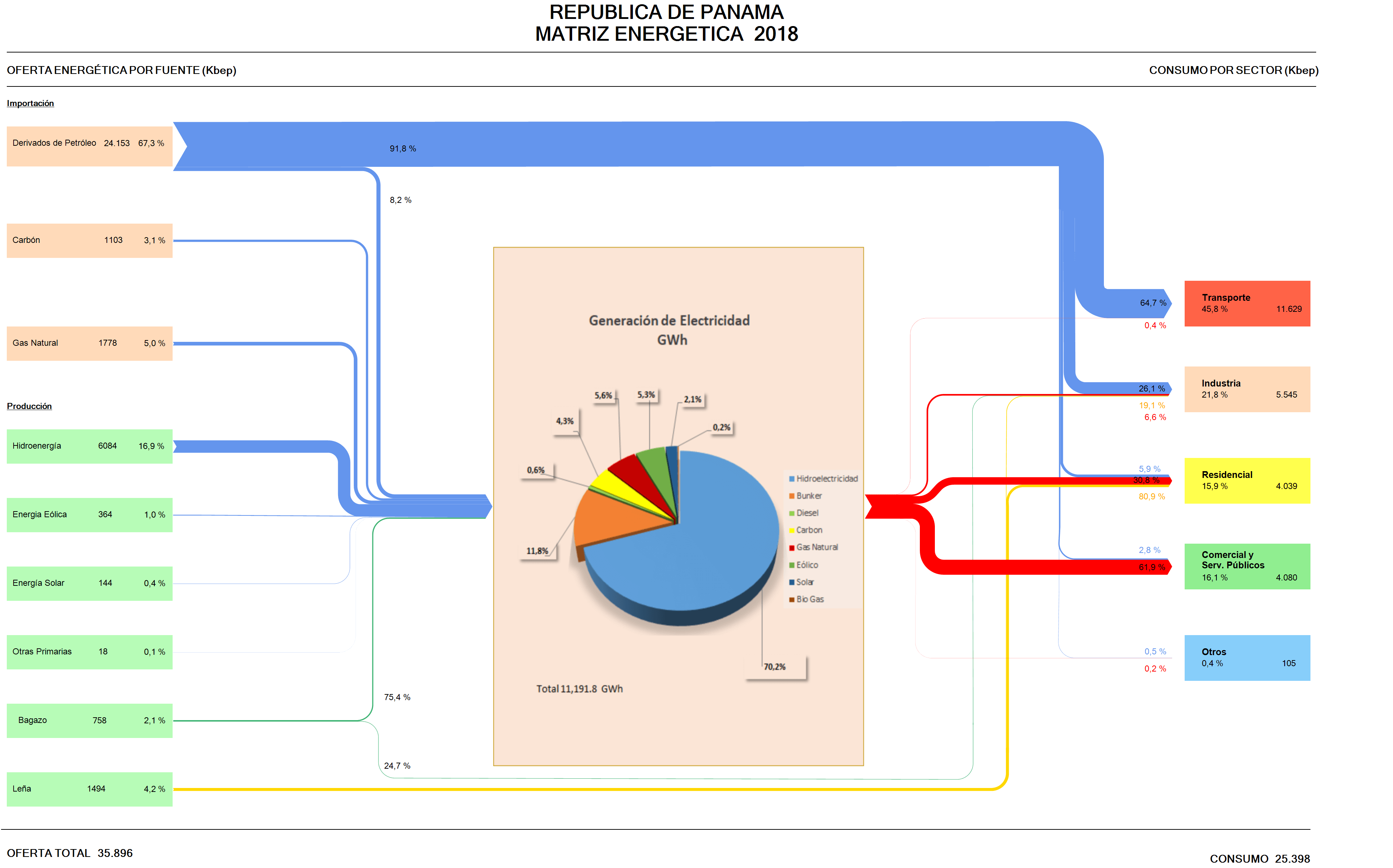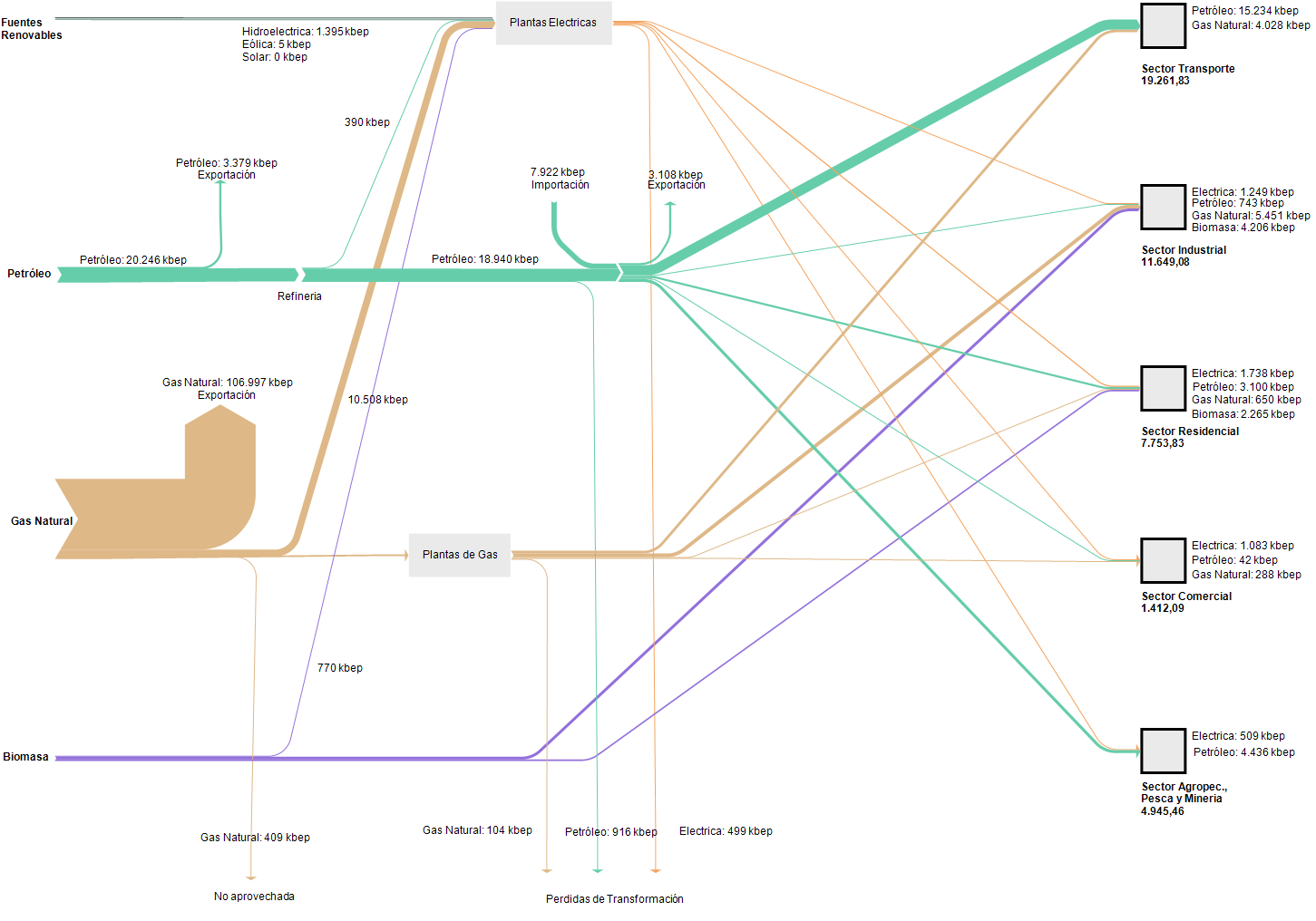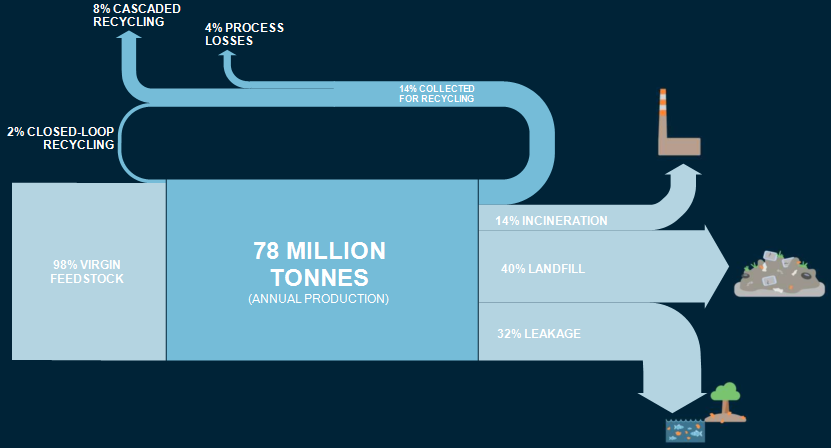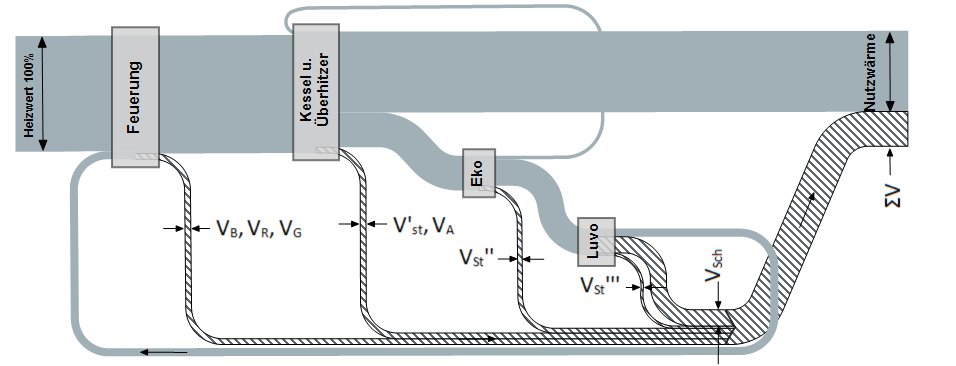A comparison of the different pathways that municipal solid waste (MSW) is going in large metropolitan centres such as Toyko, Paris and Mexico City is presented in the article ‘La recogida de basura en Mega-ciudades: En el marco de la sostenibilidad’ by Fabian Tron. Available in Revista INVI v.25 n.70 12/2010 on Scielo in Spanish.
While the data on waste quantities itself is quite old and dates back to 2005, I found the system how household waste is handled differently in these three cities quite interesting. To get an idea of the “weight” of the different pathways, I decided to do a remake of the three figures as Sankey diagrams. Here is the one for Tokyo.
Flows are in 1000 tonnes (kt) per year. There is an informal sector (Economia Informal) where waste streams are not under control of the municipality. The largest part of non-recyclable household waste goes directly to incineration or “reduction”. The remainder is led to treatment plants and eventually most of it ends up in landfill (Vertedero). Note that smaller flow quantities are over-emphasized and are not to scale (otherwise they would hardly be visible in the diagram).
If you want to see the two other Sankey diagrams, please let me know in the comments.
